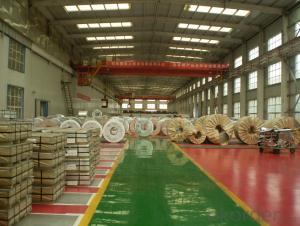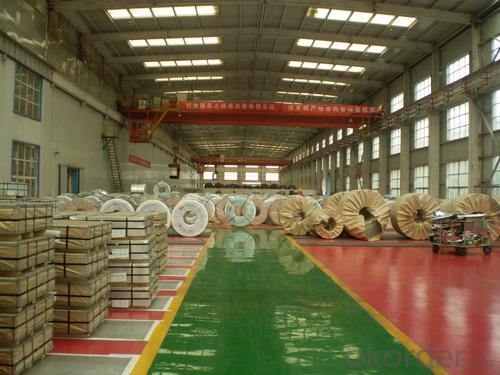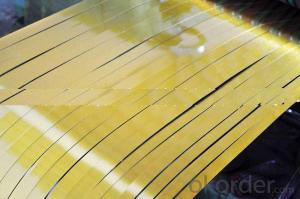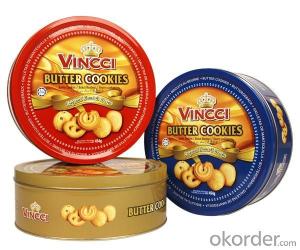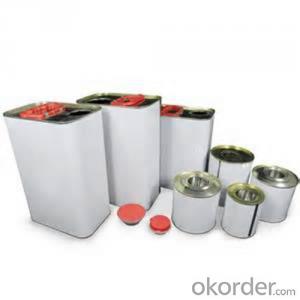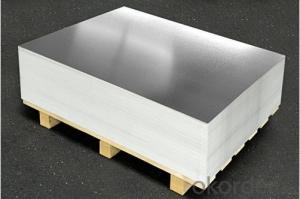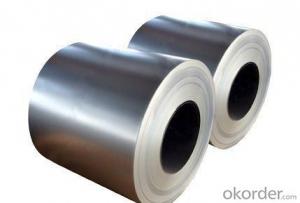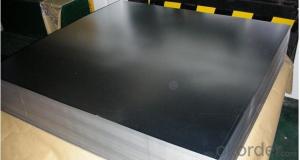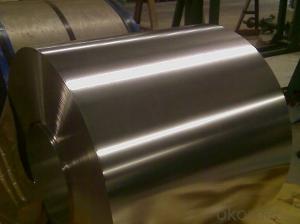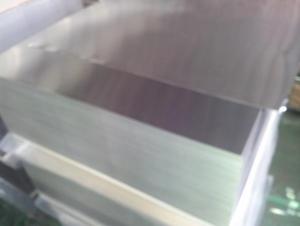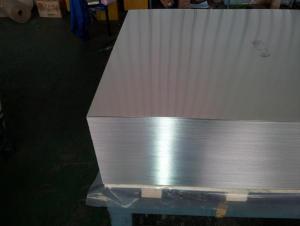Prime ETP for Metal Package of Industrial or Chemical Useage
- Loading Port:
- Shanghai
- Payment Terms:
- TT OR LC
- Min Order Qty:
- 25 m.t.
- Supply Capability:
- 30000 m.t./month
OKorder Service Pledge
OKorder Financial Service
You Might Also Like
Specification
1.Structure of Prime ETP for Metal Package of Industrial or Chemical Useage Description
Electrolytic Tinplate undoubtedly enjoys the pride of place as a packaging medium especially for food. It owes its unique position to its "nine layer sandwich structure", each of which contributes to its eminence as a packing material. The steel base of electrolytic tinplate provides the necessary strength and formability for can fabrication. The tin-iron alloy layer provides the bond between the steel and free tin layer. The free tin layer is not only responsible for the attractive bright finish and ease of solderability but is also non-toxic- a factor of vital importance in food packaging!
2.Main Features of the Prime ETP for Metal Package of Industrial or Chemical Useage
Tinning is the process of thinly coating sheets of wrought iron or steel with tin, and the resulting product is known as tinplate. It is most often used to prevent rust.
While once more widely used, the primary use of tinplate now is the manufacture of tin cans. Formerly, tinplate was used for cheap pots, pans and other holloware
3.Prime ETP for Metal Package of Industrial or Chemical Useage Images
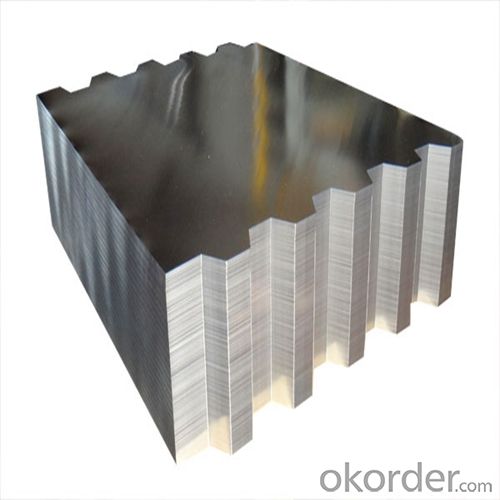
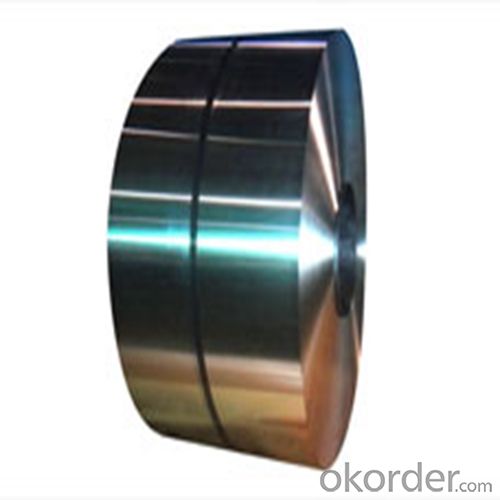
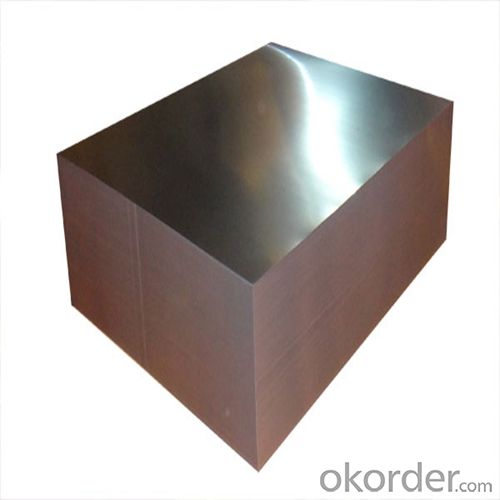
4.Prime ETP for Metal Package of Industrial or Chemical Useage Specification
Specification of :
Standard: ISO 11949 -1995, GB/T2520-2000,JIS G3303,ASTM A623, BS EN 10202
Material: MR,SPCC
Thickness:0.15mm - 0.50mm
Width: 600mm -1150mm
Temper: T1-T5
Annealing: BA & CA
Coil Inner Diameter: 508mm
Weight: 6-10 tons/coil 1~1.7 tons/sheets bundle
Passivation:311
Oil: DOS
Surface: Finish,bright,stone,matte,silver
5.FAQ of Prime ETP for Metal Package of Industrial or Chemical Useage
- What is tinning and how does it work?
Tinning is the process of thinly coating sheets of wrought iron or steel with tin, and the resulting product is known as tinplate. It is most often used to prevent rust.
- Do you only have prime quality tinplate?
We can supply both prime and second quality tinplate.
- Q: What are the regulations regarding tinplate packaging?
- Tinplate packaging is subject to various regulations, depending on the country and specific product being packaged. These regulations typically cover aspects such as food safety, labeling requirements, and environmental considerations. For example, in the United States, the Food and Drug Administration (FDA) regulates tinplate packaging for food products, ensuring they meet safety standards and are properly labeled. Additionally, there may be specific regulations related to recycling or disposal of tinplate packaging to minimize its impact on the environment. It is essential for businesses to research and comply with the relevant regulations to ensure their tinplate packaging meets all necessary requirements.
- Q: How does tinplate contribute to the functionality of household goods?
- Tinplate contributes to the functionality of household goods by providing a durable and protective coating that prevents corrosion and preserves the quality of the product. Its ability to resist moisture and maintain food freshness makes it ideal for packaging food items such as canned goods. Additionally, tinplate's versatility allows it to be easily formed into different shapes, enabling the creation of various household items like containers, kitchen utensils, and decorative pieces.
- Q: Can tinplate be used for packaging beverages?
- Yes, tinplate can be used for packaging beverages. Tinplate is a type of steel coated with tin, which provides excellent corrosion resistance and ensures the contents of the packaging remain safe and unaffected. It is commonly used for packaging beverages such as canned drinks, juices, and other liquid products as it prevents contamination, preserves freshness, and extends the shelf life of the product.
- Q: What are the typical lead times for tinplate production?
- The typical lead times for tinplate production can vary depending on various factors, such as the complexity of the product, order quantity, and the production capacity of the manufacturer. However, on average, lead times for tinplate production can range from a few weeks to a couple of months. It is recommended to consult with the specific manufacturer for more accurate and up-to-date information regarding lead times.
- Q: What are the different methods of reusing tinplate packaging?
- There are several ways to reuse tinplate packaging. One common method is to repurpose the packaging for storing small items like buttons, jewelry, or crafting supplies. Tinplate packaging can also be used as decorative containers for plants, candles, or as unique gift boxes. Additionally, tinplate packaging can be recycled and used to create new products, reducing waste and promoting sustainability.
- Q: What are the main differences between tinplate and tinplate laminates?
- The main differences between tinplate and tinplate laminates lie in their composition and functionality. Tinplate is a steel sheet coated with a thin layer of tin, providing excellent corrosion resistance and a shiny appearance. On the other hand, tinplate laminates consist of a layer of tinplate combined with other materials like paper, plastic, or film. These laminates offer enhanced properties such as improved barrier protection, flexibility, and customization options for specific packaging needs. Overall, tinplate laminates offer a wider range of applications and versatility compared to traditional tinplate.
- Q: How is tinplate affected by humidity?
- Tinplate is highly susceptible to corrosion, and therefore, humidity has a significant impact on it. Moisture in the air can cause tinplate to rust and deteriorate more quickly.
- Q: What are the common forms of corrosion that affect tinplate?
- The common forms of corrosion that affect tinplate include tin oxide corrosion, tin pest, and electrochemical corrosion.
- Q: What are the health and safety concerns associated with tinplate?
- Some health and safety concerns associated with tinplate include potential exposure to tin and other metals, which may lead to respiratory issues if inhaled. There may also be concerns related to the use of certain coatings or paints on tinplate, which could contain harmful chemicals. Additionally, handling sharp edges or cuts from tinplate can pose a safety risk.
- Q: What are the safety regulations for using tinplate in food packaging?
- The safety regulations for using tinplate in food packaging typically involve compliance with government standards such as the Food and Drug Administration (FDA) in the United States or the European Food Safety Authority (EFSA) in Europe. These regulations include guidelines on the composition and quality of tinplate coatings, prevention of migration of harmful substances into food, and adherence to good manufacturing practices to ensure the safety of the packaging material.
Send your message to us
Prime ETP for Metal Package of Industrial or Chemical Useage
- Loading Port:
- Shanghai
- Payment Terms:
- TT OR LC
- Min Order Qty:
- 25 m.t.
- Supply Capability:
- 30000 m.t./month
OKorder Service Pledge
OKorder Financial Service
Similar products
Hot products
Hot Searches
Related keywords
